Premium Only Content
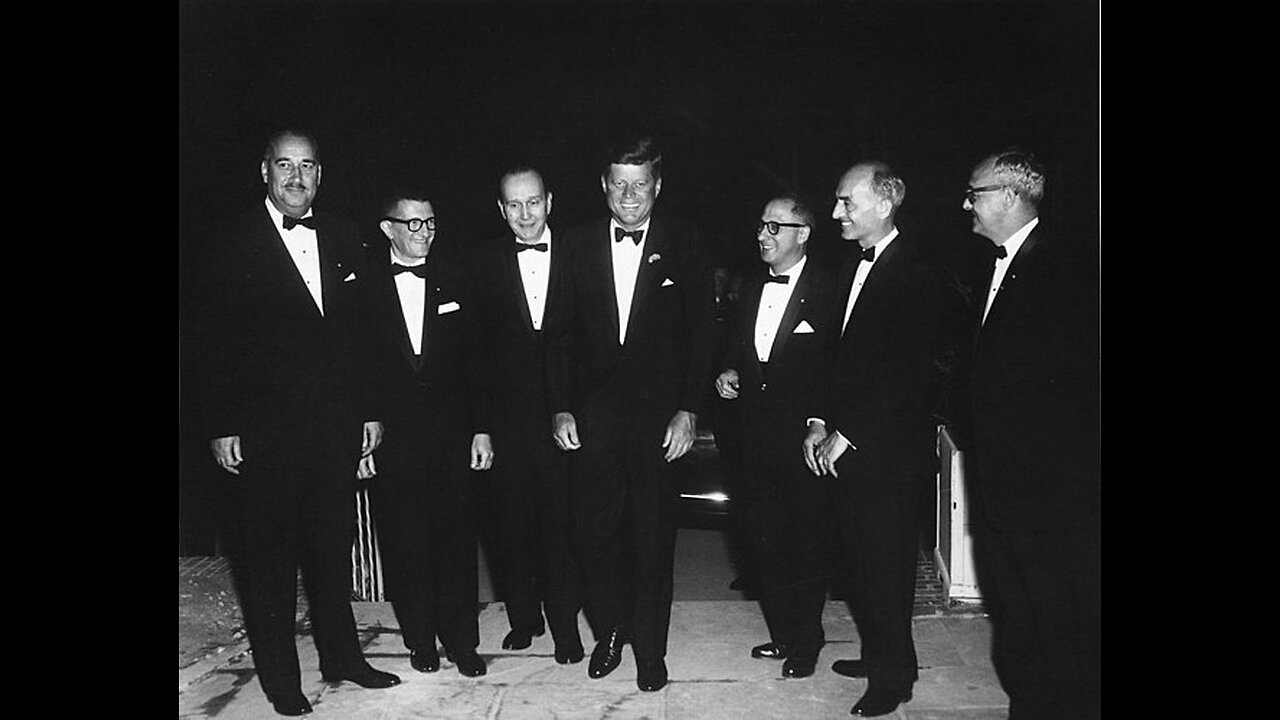
The Hidden Power Structures in America: Exploring the Revelations of Who Rules America
"Who Rules America?" is a book by social scientist and political activist G. William Domhoff, originally published in 1967 and revised and updated multiple times since then. The book examines the power structures and class divisions in American society, focusing on the ways in which a small, wealthy elite controls much of the country's political and economic institutions.
Domhoff argues that this elite, which he calls the "power elite," consists of a network of corporate leaders, politicians, and other influential figures who work together to maintain their wealth and influence. He analyzes the ways in which this elite group shapes public policy, controls the media, and maintains its power through various means.
The book also explores the ways in which the power elite interacts with other groups in American society, such as the middle class and working class, and examines the potential for social change through political and grassroots movements.
Overall, "Who Rules America?" provides a critical analysis of the power structures and class divisions in American society, shedding light on the ways in which a small group of people maintain their dominance and influence over the rest of the population.
G. William Domhoff is a social scientist and professor emeritus of sociology at the University of California, Santa Cruz. He was born on August 6, 1936, in Youngstown, Ohio.
Domhoff received his undergraduate degree from Duke University in 1958 and his Ph.D. in psychology from the University of Miami in 1962. After completing his doctorate, he held teaching positions at several universities, including the University of California, Santa Cruz, where he joined the faculty in 1965.
Throughout his career, Domhoff has focused his research on issues related to power, social class, and social change. His most influential work has been on the power elite in American society, and he has written numerous books and articles on this topic, including "Who Rules America?", "The Higher Circles", and "Class and Power in the New Deal".
Domhoff has also been active in political and social movements, particularly those related to civil rights, anti-war activism, and environmentalism. He has served on the boards of several non-profit organizations, including the National Committee for Responsive Philanthropy and the Center for Responsive Politics.
In recognition of his contributions to the field of sociology, Domhoff has received numerous honors and awards, including the C. Wright Mills Award from the Society for the Study of Social Problems and the Distinguished Scholar Award from the Political Sociology Section of the American Sociological Association.
Today, at the age of 86, Domhoff continues to write and lecture on issues related to power and social change.
C. Wright Mills was an American sociologist, philosopher, and social commentator, born on August 28, 1916, in Waco, Texas. He was a leading figure in the field of sociology in the mid-twentieth century, known for his critical and controversial perspectives on American society and politics.
Mills received his undergraduate degree from Texas A&M University and his graduate degrees from the University of Texas and the University of Wisconsin-Madison. He taught at several universities, including Columbia University, where he spent most of his career.
Mills' work focused on power structures and social inequality in American society. He argued that a small, interconnected group of elites controlled much of the country's political and economic institutions, a concept he referred to as the "power elite." This idea was articulated in his influential book "The Power Elite", published in 1956.
Mills was also known for his critical views on the role of intellectuals in society, arguing that they should be engaged in public debate and social activism. His 1959 book, "The Sociological Imagination", explored the importance of critical thinking and imagination in understanding the relationship between personal troubles and public issues.
In addition to his scholarly work, Mills was an active commentator on contemporary social and political issues. He wrote numerous articles and essays for popular publications, such as The New York Times and The Nation, and was a frequent guest on television and radio programs.
Mills died on March 20, 1962, at the age of 45, from a heart attack. His ideas continue to be influential in sociology and other social sciences, as well as in popular culture and political discourse.
In his book "Who Rules America?", G. William Domhoff identifies several categories of individuals who he argues play a key role in the power structures of American society. These include:
Corporate leaders: Domhoff argues that the top executives of major corporations, along with their boards of directors, are among the most powerful individuals in American society. They control vast amounts of wealth and influence public policy through their lobbying efforts and campaign contributions.
Politicians: According to Domhoff, elected officials at the national level are also part of the power elite, as they are heavily influenced by corporate interests and often come from privileged backgrounds themselves.
Military leaders: Domhoff notes that military leaders also have significant influence in American society, as they control the country's military forces and are involved in shaping foreign policy.
Media elites: Domhoff argues that the owners and executives of major media companies, as well as prominent journalists and commentators, are part of the power elite. They shape public opinion through their control of the news and entertainment industries.
Policy-planning groups: Domhoff notes that there are numerous think tanks, foundations, and other policy-planning groups that have significant influence over public policy. These groups often have close ties to corporate and political elites and advocate for policies that serve their interests.
George William "Bill" Domhoff (born August 6, 1936) is a Distinguished Professor Emeritus and research professor of psychology and sociology at the University of California, Santa Cruz, and a founding faculty member of UCSC's Cowell College.[1][2] He is best known as the author of several best-selling sociology books,[3] including Who Rules America? and its seven subsequent editions (1967 through 2022).[4]
Biography
Early life
Domhoff was born in Youngstown, Ohio, and raised in Rocky River, 12 miles from Cleveland. His parents were George William Domhoff Sr., a loan executive, and Helen S. (Cornett) Domhoff, a secretary at George Sr.'s company.
In high school, Domhoff was a three-sport athlete (in baseball, basketball, and football), wrote for his school newspaper's sports section, served on student council, and won a contest to be the batboy for the Cleveland Indians. He graduated as co-valedictorian.[2]
Education
Domhoff received a Bachelor of Arts degree in psychology at Duke University (1958), where he finished freshman year as sixth in his class, wrote for the Duke Chronicle, played baseball as an outfielder, and tutored the student athletes. As an undergraduate, he also wrote for The Durham Sun and received his Phi Beta Kappa key.[2] He later earned a Master of Arts degree in psychology at Kent State University (1959), and a Doctor of Philosophy degree in psychology at the University of Miami (1962).[5]
Family
Domhoff has four children; his son-in-law is former Major League Baseball player Glenallen Hill.[2][6]
Career
Academia
Domhoff was an assistant professor of psychology at California State University, Los Angeles for three years in the early 1960s. In 1965, he joined the founding faculty[7] of the University of California, Santa Cruz (UCSC) as an assistant professor at Cowell College; he became an associate professor in 1969, a professor in 1976, and a Distinguished Professor in 1993. After his retirement in 1994, he has continued to publish and teach classes as a research professor.[2][8]
Over the course of his career at UCSC, Domhoff served in many capacities at various times: acting dean of the Division of Social Sciences,[9] chair of the Sociology Department, chair of the Academic Senate, chair of the Committee on Academic Personnel, and chair of the Statewide Committee on Preparatory Education.[2] In 2007, he received the University of California's Constantine Panunzio Distinguished Emeriti Award, which honors the post-retirement contributions of UC faculty.[10]
Sociology
Domhoff's first book, Who Rules America? (1967), was a 1960s sociological best-seller,[2] arguing that the United States is dominated by an elite ownership class, both politically and economically.[11] This work was partially inspired by Domhoff's experience of the Civil rights movement and projects he assigned for his social psychology courses mapping how different organizations were connected.[2] It built on E. Digby Baltzell's 1958 book Philadelphia Gentlemen: The Making of a National Upper Class, C. Wright Mills' 1956 book The Power Elite, Robert A. Dahl's 1961 book Who Governs? and Paul Sweezy work on interest groups, and Floyd Hunter's 1953 book Community Power Structure and 1957 book Top Leadership, USA.
Who Rules was followed by a series of sociology and power structure books like C. Wright Mills and the Power Elite (1968), Bohemian Grove and Other Retreats (1974), and three more best-sellers: The Higher Circles (1970), The Powers That Be (1979), and Who Rules America Now? (1983).[2]
Domhoff has written seven updates to Who Rules America?; every edition has been used as a sociology textbook. He also has a "Who Rules America?" web site, hosted by UCSC.[12]
Psychology
In addition to his work in sociology, Domhoff has been a pioneer in the scientific study of dreams.[13][14] In the 1960s, he worked closely with Calvin S. Hall, who had developed a content analysis system for dreams. He has continued to study dreams up to the present day, and his latest research advocates a neurocognitive basis for future dream research.[15][16]
He and his research partner, Adam Schneider, maintain two web sites dedicated to quantitative dream research: DreamResearch.net and DreamBank.net.[14]
Selected Bibliography
Who Rules America?
1967. Who Rules America? Englewood Cliffs, New Jersey: Prentice Hall.
1983. Who Rules America Now? A View for the 80's. New York: Simon and Schuster.
1998. Who Rules America? Power and Politics in the Year 2000. 3rd Edition. Mountain View, Calif.: Mayfield Publishing Co.
2002. Who Rules America? Power and Politics. 4th Edition. New York: McGraw-Hill.
2006. Who Rules America? Power, Politics, and Social Change. 5th Edition. New York: McGraw-Hill.
2010. Who Rules America? Challenges to Corporate and Class Dominance. 6th Edition. New York: McGraw-Hill.
2014. Who Rules America? The Triumph of the Corporate Rich.. 7th Edition. New York: McGraw-Hill.
2022. Who Rules America? The Corporate Rich, White Nationalist Republicans, and Inclusionary Democrats in the 2020s. 8th Edition. Abingdon, UK: Routledge.
Dreams
1996. Finding Meaning in Dreams: A Quantitative Approach. New York: Plenum Publishing.
2003. The Scientific Study of Dreams: Neural Networks, Cognitive Development, and Content Analysis. Washington: American Psychological Association Press.
2018. The Emergence of Dreaming: Mind-Wandering, Embodied Simulation, and the Default Network. New York: Oxford University Press.
2022. The Neurocognitive Theory of Dreaming: The Where, How, When, What, and Why of Dreams. Cambridge, MA: MIT Press.
References
"Psychology Faculty". University of California at Santa Cruz. Retrieved 16 December 2019.
Domhoff, G. William (February 13, 2014). "G. William Domhoff: The Adventures and Regrets of a Professor of Dreams and Power". University of California.
Gans, H. (1997). "Best-sellers by sociologists: An exploratory study". Contemporary Sociology. 26 (2): 131–135. doi:10.2307/2076741. JSTOR 2076741.
Seidman, Derek. ""Who Rules America?" After 50 Years: An Interview with Professor G. William Domhoff". Eyes on the Ties (LittleSis). Retrieved 16 December 2019.
Domhoff, p.209 in Class in America: An Encyclopedia. by Robert E. Weir ABC-CLIO, 2007
"Sunday, Dec. 3, 1995 C-7. Weddings, Engagements, Anniversaries". Santa Cruz Sentinel. December 3, 1995.
"G. William (Bill) Domhoff, founding faculty, and psychologist Calvin S. Hall, at the Cowell College fountain". UCSC. 1968. Archived from the original on 2017-09-16. Retrieved 2017-06-12.
Domhoff, G. William. "G. William Domhoff: Power Structure Research retrospective (1994)." YouTube.
"William (Bill) Domhoff, dean of the division of social sciences". UCSC. Archived from the original on 2017-12-29. Retrieved 2017-06-12.
"UCSC's Michael Nauenberg wins UC distinguished emeriti award". Santa Cruz Sentinel. 8 May 2013. Retrieved 16 December 2019.
World of Sociology. Gale. November 2000. ISBN 978-0-7876-4965-4.
"Who Rules America?"
"Keynote Speakers: 2017 Annual International Dream Conference". International Association for the Study of Dreams.
King, Philip; Bulkeley, Kelly; Welt, Bernard (2011). Dreaming in the Classroom: Practices, Methods, and Resources in Dream Education. SUNY Press. p. 245.
Domhoff, G. William (2018). The Emergence of Dreaming: Mind-Wandering, Embodied Simulation, and the Default Network. Oxford, UK: Oxford University Press. ISBN 9780190673420.
Domhoff, G. William (2022). The Neurocognitive Theory of Dreaming. Cambridge, MA: MIT Press. ISBN 9780262544214.
https://en.wikipedia.org/wiki/G._William_Domhoff
Who Rules America? is a book by research psychologist and sociologist G. William Domhoff, Ph.D., published in 1967 as a best-seller (#12).
WRA is frequently assigned as a sociology textbook and documents the dangerous concentration of power and wealth in the American upper class.[1] More recent editions have brought the discussion up to date and include the rise of Barack Obama, Donald Trump, and the trend toward nationalism in the Republican Party.[2]
Summary
Domhoff argues in the book(s) that a power elite wields power in America transparently through its support of think-tanks, foundations, commissions, and academic departments.[3] Additionally, he argues that the elite control institutions through overt authority, not through covert influence.[4]
In his introduction, Domhoff writes that the book was inspired by the work of four previous researchers: sociologists E. Digby Baltzell, C. Wright Mills, economist Paul Sweezy, and political scientist Robert A. Dahl.[5]
The University of California, Santa Cruz hosts Domhoff's Who Rules America? web site.[6]
Publication history
The original edition was followed by seven subsequent editions:[7]
Who Rules America Now? (1983)
Who Rules America? Power and Politics in the Year 2000 (1998)
Who Rules America? Power and Politics (2002)
Who Rules America? Power, Politics, & Social Change (2006)
Who Rules America? Challenges to Corporate and Class Dominance (2010)
Who Rules America? The Triumph of the Corporate Rich (2014)
Studying the Power Elite: Fifty Years of Who Rules America (2017)
Who Rules America? The Corporate Rich, White Nationalist Republicans, and Inclusionary Democrats in the 2020s (2022)
References
"WhoRulesAmerica.net".
"Who Rules America? (8th edition): The Corporate Rich, White Nationalist Republicans, and Inclusionary Democrats in the 2020s".
World of Sociology. Gale. November 2000. ISBN 978-0-7876-4965-4.
Miller, Kenneth E. (1967). "Who Rules America? by G. William Domhoff". Journal of Politics. 31: 565–567. doi:10.2307/2128630. JSTOR 2128630.
Domhoff, G. William (1976). Who Rules America? p. 1. ISBN 0139583637.
"Who Rules America?" whorulesamerica.ucsc.edu.
"Studying the Power Elite: Fifty Years of Who Rules America?" (2017). Routledge.
https://en.wikipedia.org/wiki/Who_Rules_America%3F
John Cowles Sr. (December 14, 1898 – February 25, 1983) was an American newspaper and magazine publisher. He was co-owner of the Cowles Media Company, whose assets included the Minneapolis Star, the Minneapolis Tribune, the Des Moines Register, Look magazine, and a half-interest in Harper's Magazine.[2]
Biography
The son of banker, publisher, and politician Gardner Cowles Sr., John was a graduate of Phillips Exeter Academy and Harvard University.
In 1922, Cowles launched the Register and Tribune Syndicate.
In 1935, his family acquired the Minneapolis Star; John moved to Minneapolis to manage the paper. Under his leadership, it had the city's highest circulation, pressuring Minneapolis's other newspapers. With his brother Gardner "Mike" Cowles Jr., he was a co-founder of Look magazine, launched in 1937.
In 1939, the Cowles brothers, along with entrepreneur Everett M. "Busy" Arnold, became owners of the newly formed Comic Magazines, Inc., the corporate entity that would publish the Quality Comics comic book line. (Quality was an influential creative force in what historians and fans call the Golden Age of comic books).
That same year, the Cowles family purchased the Minneapolis Evening Journal, merging the Star and the Journal into the Star-Journal. The following year the Cowles family bought the Minneapolis Tribune and merged it with their company, giving it ownership of the city's major newspapers. The Tribune became the city's morning newspaper, the Star-Journal (renamed the Star in 1947) was the evening newspaper, and they published a joint Sunday edition. A separate evening newspaper (the Times) was spun off, which published until 1948.[3]: 57–62 [4]
To help counteract the agitation against the Vietnam war in the mid-1960s, Cowles served on a committee that included such notables as Arthur H. Dean, Dean Acheson, Eugene R. Black, James B. Conant, Thomas S. Gates, Roswell Gilpatric, David Rockefeller, and John J. McCloy.[5]
His service on boards included the boards of trustees of the Ford Foundation and the Carnegie Endowment for International Peace and the boards of directors of the First National Bank of Minneapolis and the Equitable Life Insurance Company of Iowa.[6]
Family
His son John Cowles Jr. married the step-daughter of Cass Canfield, the chairman of Harper & Row.
References
Sources consulted
Domhoff, G. William. (1967). Who Rules America?. Prentice Hall, Inc. Library of Congress Catalog Card No. 67-25926.
Notes
Social Security Death Index, SS#482-09-8740.
Domhoff, G. William (1967). Who Rules America?. Prentice Hall, Inc. Library of Congress Catalog Card No. 67-25926. pp. 67, 82.
Morison, Bradley (1966). Sunlight on Your Doorstep: The Minneapolis Tribune's First Hundred Years. Minneapolis: Ross & Haines.
"Timeline: A Look at History of Star Tribune". Star Tribune.
Domhoff, Who Rules America?, pp. 113, 114.
Domhoff, Who Rules America?, p. 82.
https://en.wikipedia.org/wiki/John_Cowles_Sr.
In philosophy, political science and sociology, elite theory is a theory of the State that seeks to describe and explain power relationships in contemporary society. The theory posits that a small minority, consisting of members of the economic elite and policy-planning networks, holds the most power—and that this power is independent of democratic elections.[1]
Through positions in corporations or on corporate boards, and influence over policy-planning networks through the financial support of foundations or positions with think tanks or policy-discussion groups, members of the "elite" exert significant power over corporate and government decisions.
The basic characteristics of this theory are that power is concentrated, the elites are unified, the non-elites are diverse and powerless, elites' interests are unified due to common backgrounds and positions and the defining characteristic of power is institutional position.[2]
Elite theory opposes pluralism (more than one system of power), a tradition that emphasized how multiple major social groups and interests have an influence upon and various forms of representation within more powerful sets of rulers, contributing to decently representative political outcomes that reflect the collective needs of society.
Even when entire groups are ostensibly completely excluded from the state's traditional networks of power (on the basis of arbitrary criteria such as nobility, race, gender, or religion), elite theory recognizes that "counter-elites" frequently develop within such excluded groups. Negotiations between such disenfranchised groups and the state can be analyzed as negotiations between elites and counter-elites. A major problem, in turn, is the ability of elites to co-opt counter-elites.
Democratic systems function on the premise that voting behavior has a direct, noticeable effect on policy outcomes, and that these outcomes are preferred by the largest portion of voters. Strikingly, a study published in 2014, which correlated voters' preferences to policy outcomes, found that the statistical correlation between the two is heavily dependent on the income brackets of the voting groups.[3] At the lowest income sampled in the data, the correlation coefficient reached zero, whereas the highest income returned a correlation coefficient above 0.6. The conclusion of this research was that there is a strong, linear correlation between the income of voters and how often their policy preferences become reality. The causation for this correlation has not yet been proven in subsequent studies, but is an active area of research.
History
Ancient Perspective on Elite Theory
Polybius (~150 B.C.) referred to what we call today Elite Theory as simply "autocracy". He posited with great confidence that all 3 originating forms of sources of political power: one man (monarchy/executive), few men (autocracy), many (democracy) would eventually be corrupted into a debased form of itself, if not balanced in a "mixed government". Monarchy would become "tyranny", democracy would become "mob rule", and rule by elites (autocracy) would become corrupted in what he called "oligarchy".[4] Polybius effectively said this is due to a failure to properly apply checks and balances between the three mentioned forms as well as subsequent political institutions.
Italian school of elitism
Vilfredo Pareto (1848–1923), Gaetano Mosca (1858–1941), and Robert Michels (1876–1936), were cofounders of the Italian school of elitism, which influenced subsequent elite theory in the Western tradition.[5][6]
The outlook of the Italian school of elitism is based on two ideas:
Power lies in position of authority in key economic and political institutions.
The psychological difference that sets elites apart is that they have personal resources, for instance intelligence and skills, and a vested interest in the government; while the rest are incompetent and do not have the capabilities of governing themselves, the elite are resourceful and strive to make the government work. For in reality, the elite would have the most to lose in a failed state.
Vilfredo Pareto
Pareto emphasized the psychological and intellectual superiority of elites, believing that they were the highest accomplishers in any field. He discussed the existence of two types of elites:
Governing elites
Non-governing elites
He also extended the idea that a whole elite can be replaced by a new one and how one can circulate from being elite to non-elite.
Gaetano Mosca
Mosca emphasized the sociological and personal characteristics of elites. He said elites are an organized minority and that the masses are an unorganized majority. The ruling class is composed of the ruling elite and the sub-elites. He divides the world into two group:
Political class
Non-Political class
Mosca asserts that elites have intellectual, moral, and material superiority that is highly esteemed and influential.
Robert Michels
Sociologist Michels developed the iron law of oligarchy where, he asserts, social and political organizations are run by few individuals, and social organization and labor division are key. He believed that all organizations were elitist and that elites have three basic principles that help in the bureaucratic structure of political organization:
Need for leaders, specialized staff and facilities
Utilization of facilities by leaders within their organization
The importance of the psychological attributes of the leaders
Contemporary elite theorists
Elmer Eric Schattschneider
Elmer Eric Schattschneider offered a strong critique of the American political theory of pluralism: Rather than an essentially democratic system in which the many competing interests of citizens are amply represented, if not advanced, by equally many competing interest groups, Schattschneider argued the pressure system is biased in favor of "the most educated and highest-income members of society", and showed that "the difference between those who participate in interest group activity and those who stand at the sidelines is much greater than between voters and nonvoters".[7]
In The Semisovereign People, Schattschneider argued the scope of the pressure system is really quite small: The "range of organized, identifiable, known groups is amazingly narrow; there is nothing remotely universal about it" and the "business or upper-class bias of the pressure system shows up everywhere". He says the "notion that the pressure system is automatically representative of the whole community is a myth" and, instead, the "system is skewed, loaded and unbalanced in favor of a fraction of a minority".[8]
C. Wright Mills
On the left we have the sociologist C. Wright Mills and on the right we have the writer Saul Landau (at that time his assistant).
Mills published his book The Power Elite in 1956, in which he claimed to present a new sociological perspective on systems of power in the United States. He identified a triumvirate of power groups—political, economic and military—which form a distinguishable, although not unified, power-wielding body in the United States.
Mills proposed that this group had been generated through a process of rationalization at work in all advanced industrial societies whereby the mechanisms of power became concentrated, funneling overall control into the hands of a limited, somewhat corrupt group.[9] This reflected a decline in politics as an arena for debate and relegation to a merely formal level of discourse.[10] This macro-scale analysis sought to point out the degradation of democracy in "advanced" societies and the fact that power generally lies outside the boundaries of elected representatives.
A main influence for the study was Franz Leopold Neumann's book, Behemoth: The Structure and Practice of National Socialism, 1933–1944, a study of how Nazism came to power in the German democratic state. It provided the tools to analyze the structure of a political system and served as a warning of what could happen in a modern capitalistic democracy.
Floyd Hunter
The elite theory analysis of power was also applied on the micro scale in community power studies such as that by Floyd Hunter (1953). Hunter examined in detail the power of relationships evident in his "Regional City" looking for the "real" holders of power rather than those in obvious official positions. He posited a structural-functional approach that mapped hierarchies and webs of interconnection within the city—mapping relationships of power between businessmen, politicians, clergy etc. The study was promoted to debunk current concepts of any "democracy" present within urban politics and reaffirm the arguments for a true representative democracy.[11] This type of analysis was also used in later, larger scale, studies such as that carried out by M. Schwartz examining the power structures within the sphere of the corporate elite in the United States.[12]
G. William Domhoff
In his controversial 1967 book Who Rules America?, G. William Domhoff researched local and national decision-making process networks seeking to illustrate the power structure in the United States. He asserts, much like Hunter, that an elite class that owns and manages large income-producing properties (like banks and corporations) dominate the American power structure politically and economically.[13]
James Burnham
Burnham's early work The Managerial Revolution sought to express the movement of all functional power into the hands of managers rather than politicians or businessmen—separating ownership and control.[14]
Robert D. Putnam
Putnam saw the development of technical and exclusive knowledge among administrators and other specialist groups as a mechanism that strips power from the democratic process and slips it to the advisors and specialists who influence the decision process.[15]
"If the dominant figures of the past hundred years have been the entrepreneur, the businessman, and the industrial executive, the ‘new men’ are the scientists, the mathematicians, the economists, and the engineers of the new intellectual technology."[16]
Thomas R. Dye
Dye in his book Top Down Policymaking, argues that U.S. public policy does not result from the "demands of the people", but rather from elite consensus found in Washington, D.C.-based non-profit foundations, think tanks, special-interest groups, and prominent lobbying and law firms. Dye's thesis is further expanded upon in his works: The Irony of Democracy, Politics in America, Understanding Public Policy, and Who's Running America?.
George A. Gonzalez
In his book Corporate Power and the Environment, George A. Gonzalez writes on the power of U.S. economic elites to shape environmental policy for their own advantage. In The Politics of Air Pollution: Urban Growth, Ecological Modernization and Symbolic Inclusion and also in Urban Sprawl, Global Warming, and the Empire of Capital Gonzalez employs elite theory to explain the interrelationship between environmental policy and urban sprawl in America. His most recent work, Energy and Empire: The Politics of Nuclear and Solar Power in the United States demonstrates that economic elites tied their advocacy of the nuclear energy option to post-1945 American foreign policy goals, while at the same time these elites opposed government support for other forms of energy, such as solar, that cannot be dominated by one nation.
See also: global warming, urban growth, and corporate power
Ralf Dahrendorf
In his book Reflections on the Revolution in Europe,[17] Ralf Dahrendorf asserts that, due to advanced level of competence required for political activity, a political party tends to become, actually, a provider of "political services", that is, the administration of local and governmental public offices. During the electoral campaign, each party tries to convince voters it is the most suitable for managing the state business. The logical consequence would be to acknowledge this character and openly register the parties as service providing companies. In this way, the ruling class would include the members and associates of legally acknowledged companies and the "class that is ruled" would select by election the state administration company that best fits its interests.
Martin Gilens and Benjamin I. Page
In their statistical analysis of 1,779 policy issues professors Martin Gilens and Benjamin Page found that "economic elites and organized groups representing business interests have substantial independent impacts on U.S. government policy, while average citizens and mass-based interest groups have little or no independent influence."[18][19] Critics cited by Vox.com argued, using the same dataset, that when the rich and middle class disagreed, the rich got their preferred outcome 53 percent of the time and the middle class got what they wanted 47 percent of the time. Some critics disagree with Gilens and Pages' headline conclusion, but do believe that the dataset confirms "the rich and middle (class) are effective at blocking policies that the poor want".[20]
Thomas Ferguson
The political scientist Thomas Ferguson's Investment Theory of Party Competition can be thought of as an elite theory. Set out most extensively in his 1995 book Golden Rule: The Investment Theory of Party Competition and the Logic of Money-driven Political Systems, the theory begins by noting that in modern political systems the cost of acquiring political awareness is so great that no citizen can afford it.[21] As a consequence, these systems tend be dominated by those who can, most typically elites and corporations. These elites then seek to influence politics by 'investing' in the parties or policies they support through political contributions and other means such as endorsements in the media.
See also
Democratic deficit
Elitism
Iron law of oligarchy
Mass society
Positive political theory
The Power Elite
Ruling class
Expressions of dominance
Liberal elite
Invisible Class Empire
References
"Theories of American Democracy"
Deric., Shannon (2011-01-01). Political sociology : oppression, resistance, and the state. Pine Forge Press. ISBN 9781412980401. OCLC 746832550.
Gilens, M., & Page, B. (2014). Testing Theories of American Politics: Elites, Interest Groups, and Average Citizens. Perspectives on Politics, 12(3), 564-581. doi:10.1017/S1537592714001595
Polybius.(~150 B.C.) The Rise of the Roman Empire: Book 6. Translated by Ian Scott-Kilvert (1979). Penguin Books; London, England
Robert A. Nye, The Anti-Democratic Sources of Elite Theory: Pareto, Mosca, Michels, Sage, 1977.
J. J. Chambliss (ed.), Philosophy of Education: An Encyclopedia, Routledge, 2013, p. 179.
Woolley and Papa 1998, 165
Schattschneider 1960, 30-36
Bottomore, T. (1993). Elites and Society (2nd ed.). London: Routledge. p. 25.
Mills, C. Wright (1956). The Power Elite. p. 274. ISBN 0-19-541759-3.
Hunter, Floyd (1953). Community Power Structure: A Study of Decision Makers. p. 6. ISBN 0-8078-0639-0.
Schwartz, M., ed. (1987). The Structure of Power in America: The Corporate Elite as a Ruling Class. New York: Holmes & Meier. ISBN 0-8419-0764-1.
Domhoff, G. William (1967). Who Rules America?. McGraw-Hill. ISBN 0-7674-1637-6.
Bottomore, T. (1993). Elites and Society (2nd ed.). London: Routledge. p. 59.
Putnam, Robert D. (1977). "Elite Transformation in Advance Industrial Societies: An Empirical Assessment of the Theory of Technocracy". Comparative Political Studies. 10 (3): 383–411 (p.385). doi:10.1177/001041407701000305. S2CID 154141193.
Putnam, Robert D. (1976). The Comparative Study of Political Elites. New Jersey: Prentice Hall. p. 384. ISBN 0-13-154195-1.
Dahrendorf, Ralf (1990) Reflections on the Revolution in Europe: In a letter intended to have been sent to a gentleman in Warsaw. New York: Random House
"Study: US is an oligarchy, not a democracy". BBC News. 17 April 2014. Retrieved 24 October 2022.
Testing Theories of American Politics: Elites, Interest Groups, and Average Citizens (Fall 2014)
Matthews, Dylan (9 May 2016). "Remember that study saying America is an oligarchy? 3 rebuttals say it's wrong". Vox. Retrieved 24 October 2022.
Ferguson, Thomas (1995). Golden Rule : The Investment Theory of Party Competition and the Logic of Money-Driven Political Systems. Chicago: University of Chicago Press. ISBN 0226243176.
Bibliography
Amsden, Alice (2012) The Role of Elites in Economic Development, Oxford University Press, 2012. with Alisa Di Caprio and James A. Robinson.
Bottomore, T. (1993) Elites and Society (2nd Edition). London: Routledge.
Burnham, J. (1960) The Managerial Revolution. Bloomington: Indiana University Press.
Crockett, Norman L. ed. The power elite in America (1970), excerpts from experts online free
Domhoff. G. William (1967–2009) Who Rules America? McGraw-Hill. online 5th edition
Domhoff, G. William. Studying the power elite: Fifty years of who rules America? (Routledge, 2017); new essays by 12 experts
Downey, Liam, et al. "Power, hegemony, and world society theory: A critical evaluation." Socius 6 (2020): 2378023120920059 online.
Dye, T. R. (2000) Top Down Policymaking New York: Chatham House Publishers.
Gonzalez, G. A. (2012) Energy and Empire: The Politics of Nuclear and Solar Power in the United States. Albany: State University of New York Press
Gonzalez, G. A. (2009) Urban Sprawl, Global Warming, and the Empire of Capital. Albany: State University of New York Press
Gonzalez, G. A. (2006) The Politics of Air Pollution: Urban Growth, Ecological Modernization, And Symbolic Inclusion. Albany: State University of New York Press
Gonzalez, G. A. (2001) Corporate Power and the Environment. Rowman & Littlefield Publishers
Hunter, Floyd (1953) Community Power Structure: A Study of Decision Makers.
Lerner, R., A. K. Nagai, S. Rothman (1996) American Elites. New Haven CT: Yale University Press
Milch, Jan, (1992) . C.Wright Mills och hans sociologiska vision Om hans syn på makt och metod och vetenskap,. Sociologiska Institution Göteborgs Universit-("C.Wright Mills and his sociological vision About his views on power and methodology and science. Department of Sociology Gothenburg University")
Mills, C. Wright (1956) The Power Elite. online
Neumann, Franz Leopold (1944). Behemoth: The Structure and Practice of National Socialism, 1933 - 1944. Harper. online
Putnam, R. D. (1976) The Comparative Study of Political Elites. New Jersey: Prentice Hall.
Putnam, R. D. (1977) ‘Elite Transformation in Advance Industrial Societies: An Empirical Assessment of the Theory of Technocracy’ in Comparative Political Studies Vol. 10, No. 3, pp383–411.
Schwartz, M. (ed.) (1987) The Structure of Power in America: The Corporate Elite as a Ruling Class. New York: Holmes & Meier.
Volpe, G. (2021) Italian Elitism and the Reshaping of Democracy in the United States. Abingdon, Oxon; New York: Routledge.
https://en.wikipedia.org/wiki/Elite_theory
In sociology and in political science, the term The Establishment describes the dominant social group, the élite who control a polity, an organization, or an institution. In the praxis of power, The Establishment usually is a self-selecting, closed élite entrenched within specific institutions — hence, a relatively small social class can exercise all socio-political control.[1]
In 1955, the journalist Henry Fairlie popularized the contemporary usage of the term The Establishment to denote the network of socially prominent and politically important people:
By the ‘Establishment’ I do not mean only the centres of official power — though they are certainly part of it — but rather the whole matrix of official and social relations within which power is exercised. The exercise of power in Britain (more specifically, in England) cannot be understood unless it is recognised that it is exercised socially.[2]
Consequently, the term the Establishment became common usage in the press of London;[3] The Oxford English Dictionary cites Fairlie's column originating the British usages of the term the Establishment, as in the established church denoting the official Church of England.[4] Moreover, in sociologic jargon, an outsider is the person who is not a member of The Establishment.[5][6]
Australia
The term, establishment is often used in Australia to refer both to the main political parties and also to the powers behind those parties. In the book, Anti-political Establishment Parties: A Comparative Analysis by Amir Abedi (2004),[7] Amir Abedi refers to the Labor Party and the Coalition Parties (the Liberal Party and the National/Country Party) as the establishment parties.
Canada
The original Canadian Establishment began as a mix between the British and American models, combining political appointments and business acumen. In Francophone Canada, the local leaders of the Catholic Church played a major role. The Family Compact is the first identifiable Canadian Establishment in Anglophone Canada.
The journalist Peter C. Newman defined the modern Canadian Establishment in his 1975 book The Canadian Establishment. It catalogued the richest individuals and families living in Canada at the time. All of the specific people he identified were prominent business leaders, especially in the media and in public transit. Newman reports that several of these old families have maintained their importance into the twenty-first century.[citation needed]
According to Anglo-American journalist Peter Brimelow, Newman's establishment was overshadowed by a new class. His book The Patriot Game "makes a swinging attack on the political, bureaucratic, and academic establishment whose entire well-being rests on the promotion of Canadian nationalism. [He] identifies the federal Liberal Party as the selfish and thoughtless inventor of this modern activity of creating a Canadian identity, he argues that it is now a pervasive disease throughout Canada's national political and cultural elite."[8]
Hong Kong
The term is also used in politics of Hong Kong, where political parties, community groups, chambers of commerce, trade unions and individuals who are cooperative with and loyal to the Chinese Communist Party and the post-handover Hong Kong Government are labelled (most often self-labelled) "pro-Beijing" or "pro-establishment". The term first appeared in 2004.[9]
Ireland
The term "Official Ireland" is commonly used in the Republic of Ireland to denote the media, cultural and religious establishment.[10]
Pakistan
Main article: The Establishment (Pakistan)
In Pakistan, the term "The Establishment" refers to the military and their relations with the intelligence community and high-level political officials that allow them to exert dominance over the government.
United Kingdom
The United Kingdom has numerous entrenched groups that are regarded as forming the establishment: these include the royal family, the aristocracy, the landed gentry, the privy council, senior civil servants, lawyers, academics, Church of England clergy, financiers, industrialists, the armed services and other professionals.[11][12]
United States
Beacon Hill, Boston: a preeminent Boston Brahmin neighborhood.[13]
In the United States, the term the establishment typically refers to the two-party political system, in which the Republican Party and the Democrat Party usually are perceived as alike in their anti-labour policies, pro-federal policy, and defense of corporate interests. The usage refers to the original coinage of the term the Establishment in 1955, referring to the intricate matrix of power and connections among corporations, politicians, government agencies, and some social groups.
The establishment also referred to White Anglo-Saxon Protestants (WASPs), who constituted the majority of the social elites who have dominated American society, culture, and politics for most of U.S. history, enjoying advantages in education, voting rights, and land ownership. In the 1950s, the New Left criticised WASP hegemony of American society.[14] Some prominent American families have held disproportionate wealth and wielded disproportionate political power over the decades. Experts talk about what C. Wright Mills called the "power elite",[15][16] and about leadership communities in policy areas such as foreign policy.[17] Many of these families often have ties to older East Coast cities such as Boston, New York City, Philadelphia and Newport, Rhode Island. One such group of interconnected elite families is the Boston Brahmins. Many in the East Coast establishment have ties to Ivy League colleges and to prep schools in New England and the Northeast.[18] In the Southern United States, the First Families of Virginia are an example of the Establishment.
Traditionally, WASP and Protestant establishment families have been associated with Episcopal (or Anglican), Presbyterian, United Methodist, Congregationalist, and other mainline Protestant denominations.[19] According to the Pew Research Center, the Episcopal Church "has often been seen as the religious institution most closely associated with the American establishment, producing many of the nation's most important leaders in politics and business."[20]
See also
Anti-establishment
Cabal
Cronyism
Deep State
Drain the swamp
Established church
Iron law of oligarchy
Liberal elite
New World Order
Power to the people
Ruling party
The Man
References
“The Establishment”, The New Fontana Dictionary of Modern Thought Third Edition (1999) Alan Bullock and Stephen Trombley, Eds., pp. 283–284.
Fairlie, Henry (23 September 1955). "Political Commentary". The Spectator. pp. 5–7. Retrieved 22 June 2022.
however, that usage already had occurred in the late 19th century, in 1882, when Ralph Waldo Emerson used the term as politics: “There are always two parties, the party of the Past and the party of the Future: the Establishment and the Movement.” See Fairlie, Henry (19 October 1968). "Evolution of a Term". The New Yorker. and Darrel Abel, Democratic Voices and Vistas (2002) p. 2.
Wodak, Ruth. "The “Establishment”, the “Élites”, and the “People”, Journal of Language and Politics 16.4 (2017): 551-565.
Elias, Norbert; Scotson, John L (1965). The Established and the Outsiders. OCLC 655412048.[page needed]
Elias, Norbert; Martins, Herminio; Whitley, Richard (1982). Scientific Establishments and Hierarchies. Dordrecht: Reidel. p. 4. ISBN 978-90-277-1322-3. "Those who are outsiders, in relation to a given establishment, as a rule, have on their part resources needed by the establishments' members. . . . Established and outsiders, in other words, have specific functions for each other. No established-outsider relationship is likely to maintain itself for long without some reciprocity of dependence. . . . Members of an establishment usually are very careful to maintain and, if possible, to increase the high dependence ratio of their outsider groups and thus the power differentials between these and themselves."
Abedi, Amir (2004). Anti-political Establishment Parties: A Comparative Analysis - Amir Abedi - Google Buku. ISBN 9780415319614. Archived from the original on 25 December 2016. Retrieved 13 May 2015.
Stewart, Gordon (4 June 1988). "The Patriot Game: National Dreams & Political Realities by Peter Brimelow (review)". The Canadian Historical Review. 69 (2): 273–274 – via Project MUSE.
Sonny Shiu-Hing Lo, Steven Chung-Fun Hung, and Jeff Hai-Chi Loo. "The Democratic Alliance for the Betterment and Progress of Hong Kong as Flagship of China's United Front Work." in China's New United Front Work in Hong Kong (Palgrave Macmillan, Singapore, 2019) pp. 43-75.
Elaine Byrne, "OFFICIAL IRELAND" McGill Summer School 2019.
Jones, Owen (26 August 2014). "The establishment uncovered: how power works in Britain". The Guardian.
Peter Hennessy, The great and the good: An inquiry into the British establishment (Policy Studies Institute, 1986).
Cople Jaher, Frederic (1982). The Urban Establishment: Upper Strata in Boston, New York, Charleston, Chicago, and Los Angeles. University of Illinois Press. p. 25. ISBN 9780252009327.
By the 1950s, the emerging New Left was "thumbing their noses at the stuffy white, Anglo-Saxon, Protestant establishment." W. J. Rorabaugh, "Challenging Authority, Seeking Community, and Empowerment in the New Left, Black Power, and Feminism," Journal of Policy History (Jan 1996) vol 8 p. 110.
G. William Domhoff, The power elite and the state. (Routledge, 2017).
Mark S. Mizruchi, "The Power Elite in historical context: a reevaluation of Mills's thesis, then and now." Theory and Society 46.2 (2017): 95-116.
Priscilla Roberts, "'All the Right People': The Historiography of the American Foreign Policy Establishment." Journal of American Studies 26.3 (1992): 409-434. online
Donhoff, G. William, Who Rules America?, Prentice Hall, 1967.
Davidson, James D.; Pyle, Ralph E.; Reyes, David V. (1995). "Persistence and Change in the Protestant Establishment, 1930-1992". Social Forces. 74 (1): 157–175 [p. 164]. doi:10.1093/sf/74.1.157. JSTOR 2580627.
Lipka, Michael (2 July 2018). "5 facts about Episcopalians". Pew Research Center.
Further reading
Wikiquote has quotations related to The Establishment.
Burch, Philip H. Jr. (1983). "The American establishment: Its historical development and major economic components". Research in Political Economy. 6: 83–156.
Campbell, Fergus. The Irish Establishment 1879–1914 (2009)
Dogan, Mattéi, Elite configurations at the apex of power (2003)
Hennessy, Peter. The great and the good: an inquiry into the British establishment (Policy Studies Institute, 1986)
Jones, Owen. The Establishment – and how they get away with it (Penguin, 2015)
Kauppi, N. and Madsen, M.R., eds. Transnational Power Elites: The New Professionals of Governance, Law and Security (Routledge, 2013). online
Page, E.C. People Who Run Europe (1997).
Rovere, Richard. The American establishment and other reports, opinions, and speculations (1962), a famous spoof; it is online
Silk, Leonard Solomon and Mark Silk. American Establishment (1980)
Valentine, C. The British Establishment, 1760-1784: An Eighteenth-Century Biographical Dictionary (University of Oklahoma Press, 1970)
Wodak, Ruth. "The “Establishment”, the “Élites”, and the “People”." Journal of Language and Politics 16.4 (2017): 551-565. online
-
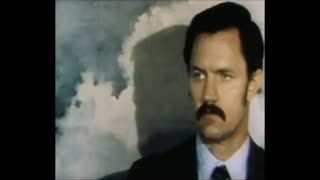 55:35
55:35
The Memory Hole
11 months agoJohn Stockwell Reveals Shocking CIA Secrets in 'In Search of Enemies' (1978)
1.49K3 -
 LIVE
LIVE
LFA TV
12 hours agoLIVE & BREAKING NEWS! | WEDNESDAY 11/26/25
3,121 watching -
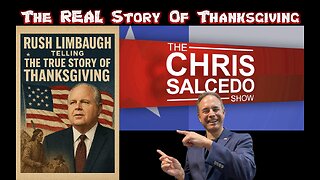 1:59:03
1:59:03
The Chris Salcedo Show
13 hours ago $7.55 earnedRemembering Rush On A Truly American Holiday
12.4K1 -
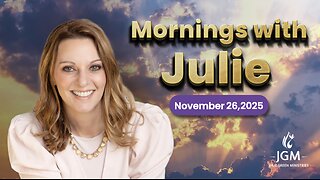 36:24
36:24
Julie Green Ministries
3 hours agoLIVE WITH JULIE
56.3K169 -
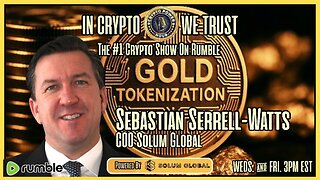 1:05:27
1:05:27
Crypto Power Hour
11 hours ago $7.60 earnedWhat You Need To Know About Gold Tokenization
42.4K7 -
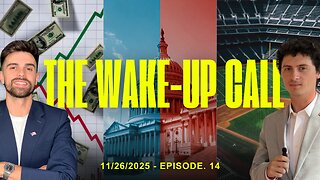 1:46:14
1:46:14
LIVE WITH CHRIS'WORLD
12 hours agoTHE WAKE UP CALL - 11/26/2025 - Episode 14
15.8K2 -
 2:16:19
2:16:19
The Bold Lib
15 hours agoBOLDCHAT: Trump Pardons | DOGE | Patel w/ANGELA BELCAMINO
24.8K6 -
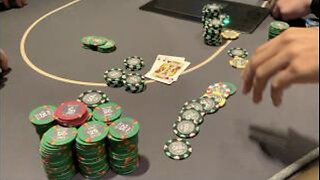 47:14
47:14
Brad Owen Poker
1 day ago $2.39 earnedI Have STRAIGHT FLUSH vs Flopped NUTS!! ALL IN w GOLD BRACELET LEGEND!! $15,000+! Poker Vlog EP 358
17.8K -
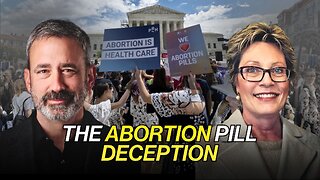 36:11
36:11
Uncommon Sense In Current Times
19 hours ago $5.49 earnedThe Truth About the Abortion Pill | Sue Liebel Exposes FDA Failures & Hidden Dangers
32.8K2 -
 2:05:12
2:05:12
BEK TV
1 day agoTrent Loos in the Morning - 11/26/2025
19.7K